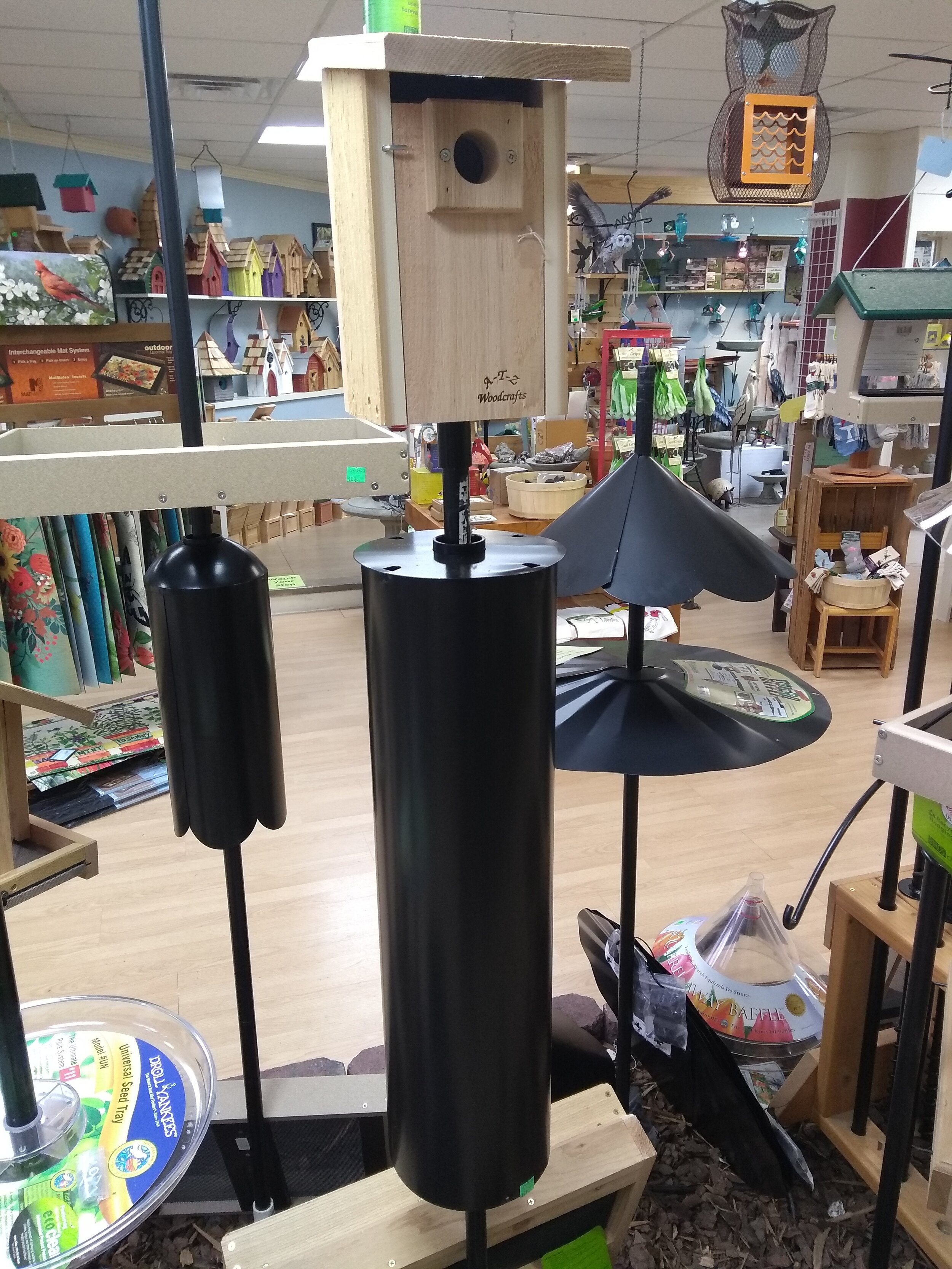In the coming weeks we will be sharing information about Bluebirds. We would like to address specific questions and concerns you may have that can then be shared with everyone. If you have questions regarding Bluebirds please email us at thewoodthrushshop@gmail.com.
Have you noticed? Birds are singing and going through some of the motions of courtship. The breeding season is fast approaching. Its evident Eastern Bluebirds are already searching and competing for mates and potential nest-sites. Several times in past weeks I’ve seen multiple Bluebirds land on and look in the nest boxes around my yard. (See video) In the video you will see classic courtship behaviors like wing fluttering. Many of you have reported likewise.
Although most Bluebirds won’t begin their first nesting until late March to mid April, their search for nest sites will typically intensify in the last weeks of February and into March. A few eager Bluebirds may get on nest as early as mid-March.
You may think you don’t have the right situation for Bluebirds because you’ve heard they have very specific needs for a nest-box location. Not really true. Most things you hear about what Bluebirds NEED are very much over stated. Bluebirds adapt very nicely to all kinds of yard situations. If Bluebirds needed the “perfect setup” as described by the many articles you may read about them they would be extinct by now. These perfect nest-sites generally never existed in nature.
In fact it’s interesting to consider where Bluebirds nested before people started putting out nest-boxes. Bluebirds are considered a secondary cavity nester which means they will not excavate a nest, like a woodpecker, but use one that has been created already. Once upon a time secondary cavities were in great supply but through habitat loss and competition Bluebirds were “forced” to adapt to birdhouses, or what we refer to as nest-boxes. Using nest-boxes is an example of Bluebirds adaptability. Offer a couple of nest-boxes in good locations and see what happens. If you already have nest boxes now is a good time to make sure they are cleaned out and free of old debris left over from last year’s nesting’s.
Here are a Few Tips on Choosing a Location:
Ø An open lawn area may be preferable but not absolutely necessary. Choose the most open location available in your yard even if it means there will be a some human traffic.
Ø Bluebirds are typically more sensitive to a lot of bird traffic, so it’s not recommended nest boxes be placed near bird feeders. What’s a comfortable distance? It’s impossible to be exact but we would suggest 50 to 100 feet away, or out of sight of feeding stations.
Ø You may have heard that nest boxes need to face east. While this may be helpful to keep wet weather from being a detrimental factor this is not something Bluebirds require.
Ø A Bluebird box does not need to be on a pole. The advantage of a pole is it allows you to position the box in the location you determine to be the best and apply a predator baffle if necessary. Bluebird boxes can be mounted to trees, fences, and utility poles. A height of about 5’ is sufficient. Our pole system for Bluebird boxes will put the box at 5’ after installation. The two primary predators of nesting Bluebirds are raccoons and rat snakes. Both can easily climb trees and poles so if you experience regular visits by raccoons you should consider placing your Bluebird box on a pole with a raccoon baffle.
Bluebird box with raccoon baffle.
Ø How many boxes can be offered in a typical yard situation? As a general rule we would suggest boxes be placed 90 to 100 feet apart, or out of sight of one another. There is no harm in offering lots of nest boxes (birdhouses) in your yard but do not expect them to all get used at the same time especially if they are close in proximity to one another. For instance, nest boxes within 25 feet of one another are not likely to be occupied simultaneously. Birds are too territorial to accept this situation under normal circumstances unless they are colony nesters like Purple Martins and Cliff Swallows. But feel free to decorate your yard with lots of birdhouses if that’s your thing. Offering multiple nest-boxes is great and it does lessen the competition for a single box but do consider the nature of the species you are trying to attract and what kind of setting would be most appealing. I offer many boxes in varied situations in my yard and enjoy observing which ones get used from year to year. Sometimes I’m surprised by the choices made by birds.
Ø We are often asked “when is a good time to put up a bluebird box”? Every day is good. However, it is a great time to do so now and in the next few weeks because the breeding season is fast approaching. The sooner they know the box is there the more likely they will consider using it this season.
And PLEASE, PLEASE, PLEASE remember do not let your desire to attract Bluebirds cause you to clean out other songbird’s nests like Chickadees, Wrens, Tufted Titmice, or White-breasted Nuthatch. In no way does cleaning out these birds nests ensure you will get Bluebirds. Chickadees typically nest earlier than Bluebirds and only once. So PLEASE let the Chickadees have the box if they have begun to nest.
Bluebirds will nest up to 3 times per season and have plenty of time. Even if you do not get Bluebirds during the first nesting there is still time for two more. Besides, if a Bluebird wanted the nest-box it would easily out-compete a Chickadee. Enjoy the fact that you’ve attracted a native songbird to your nest-box and watch the process. It’s a lot of fun.


